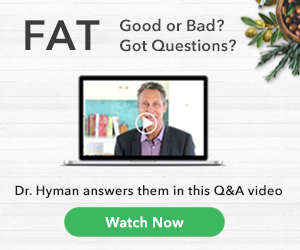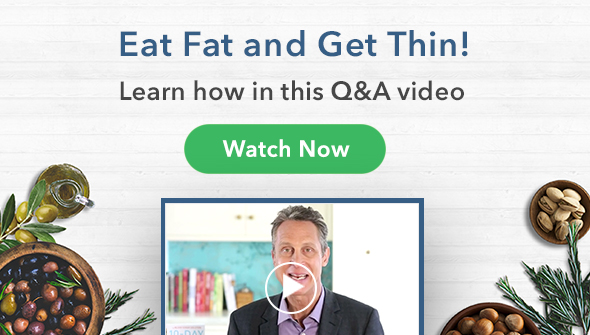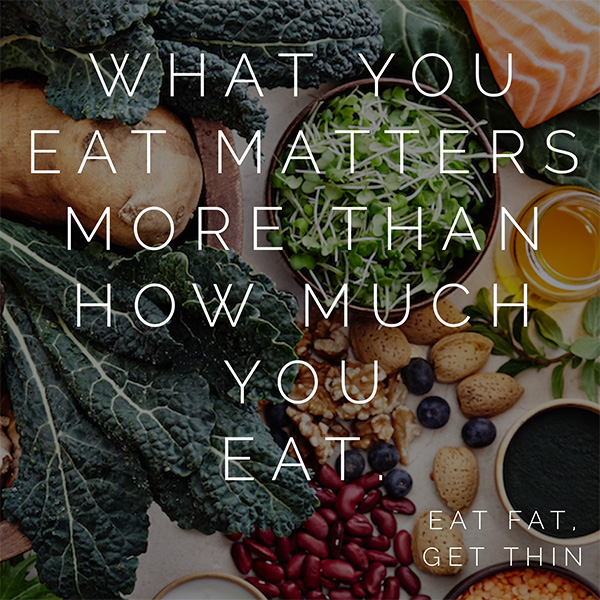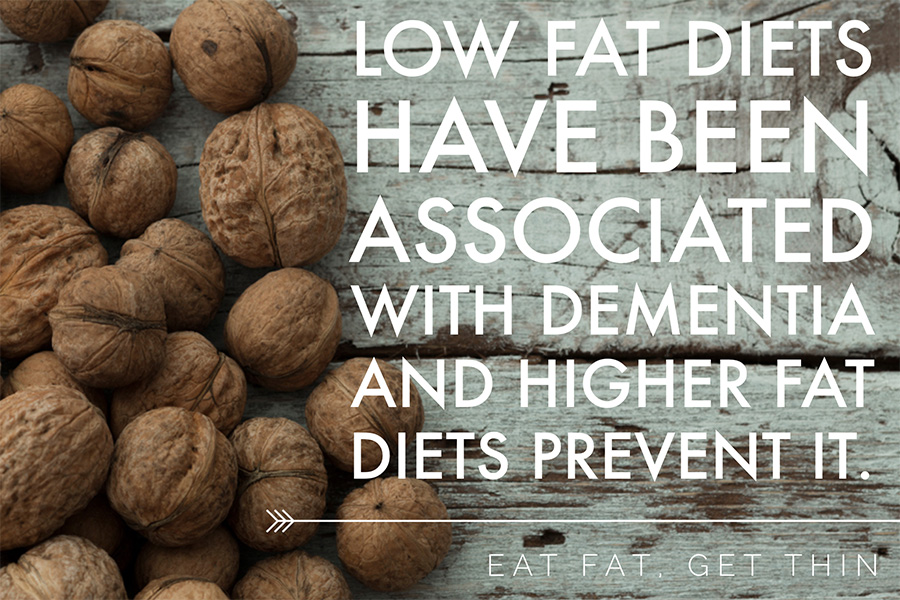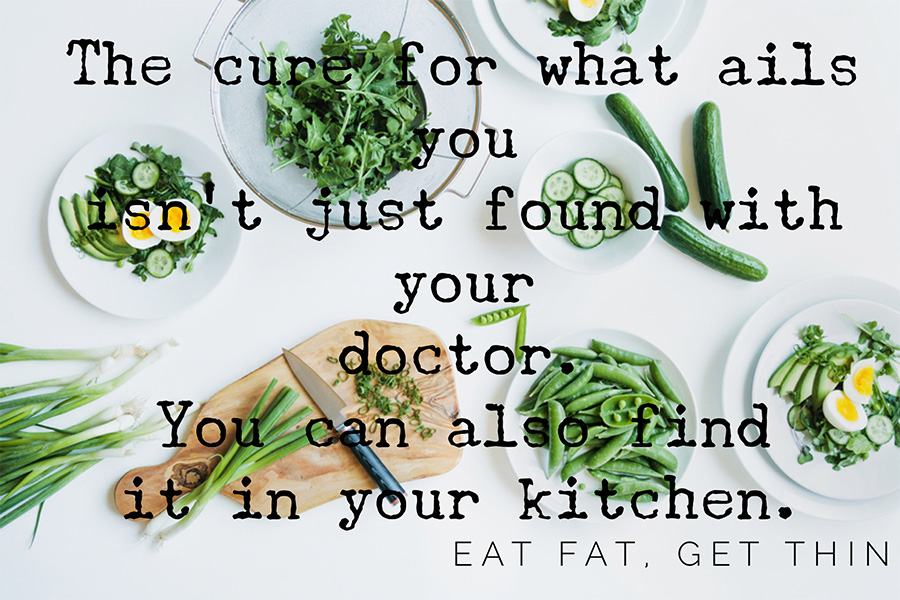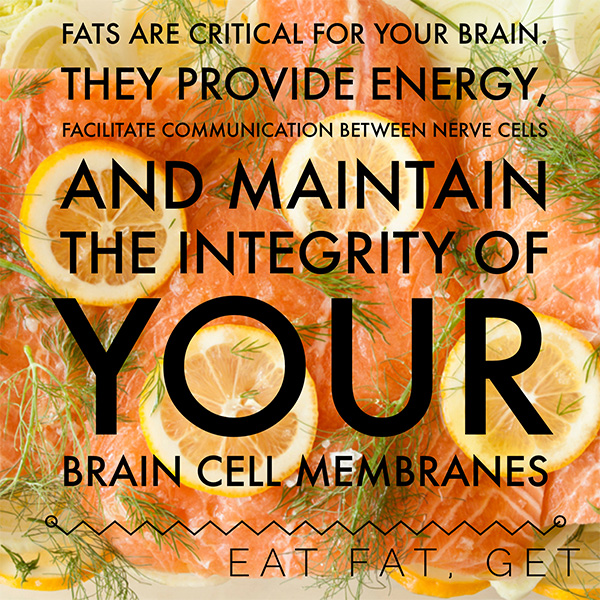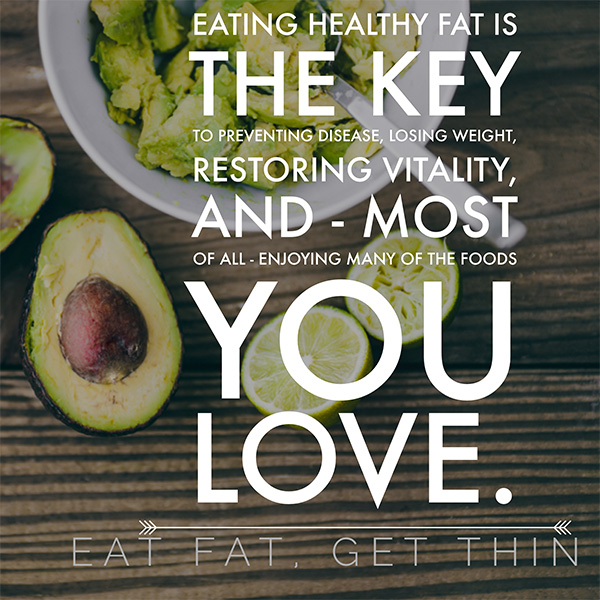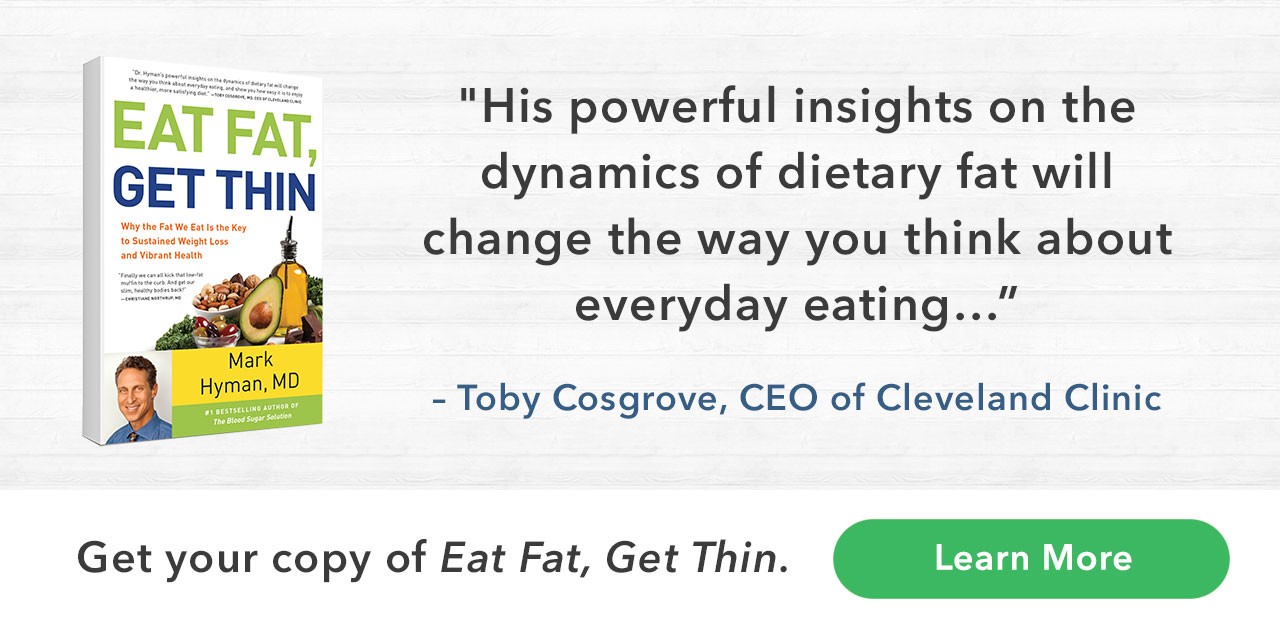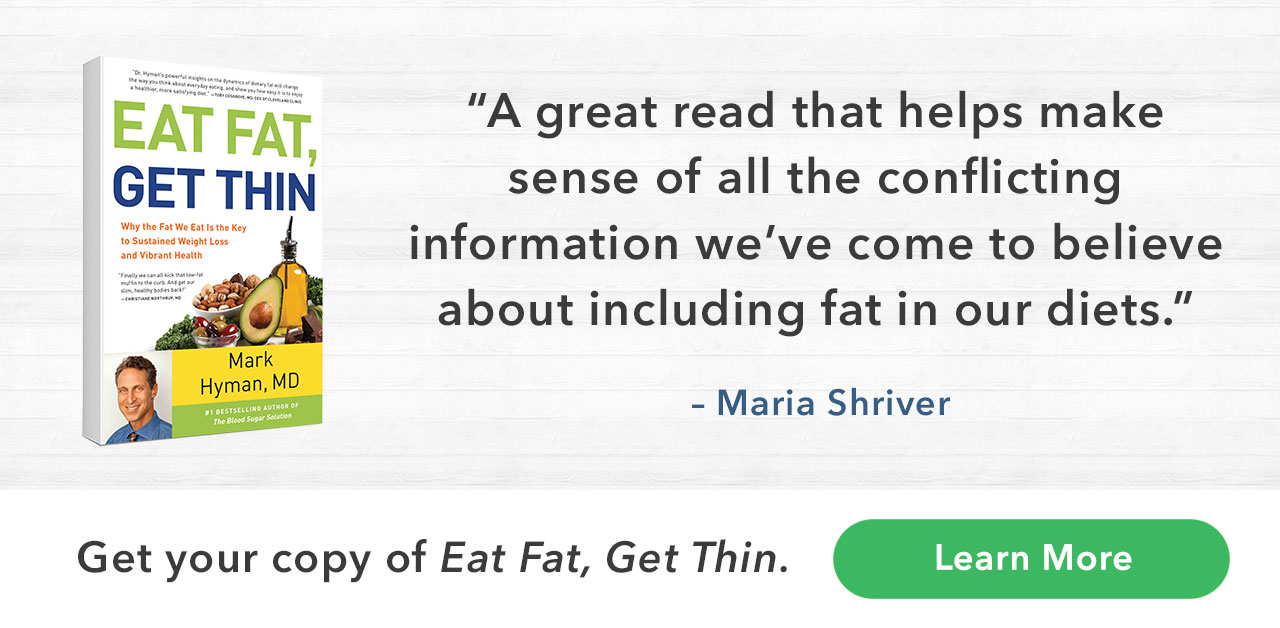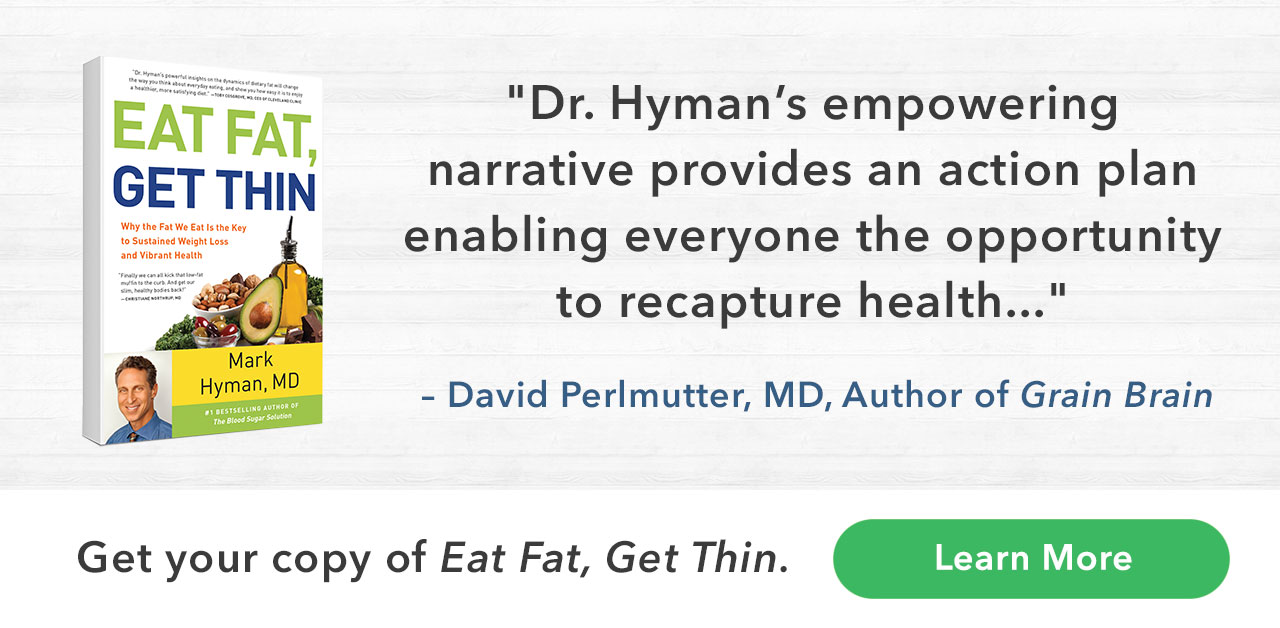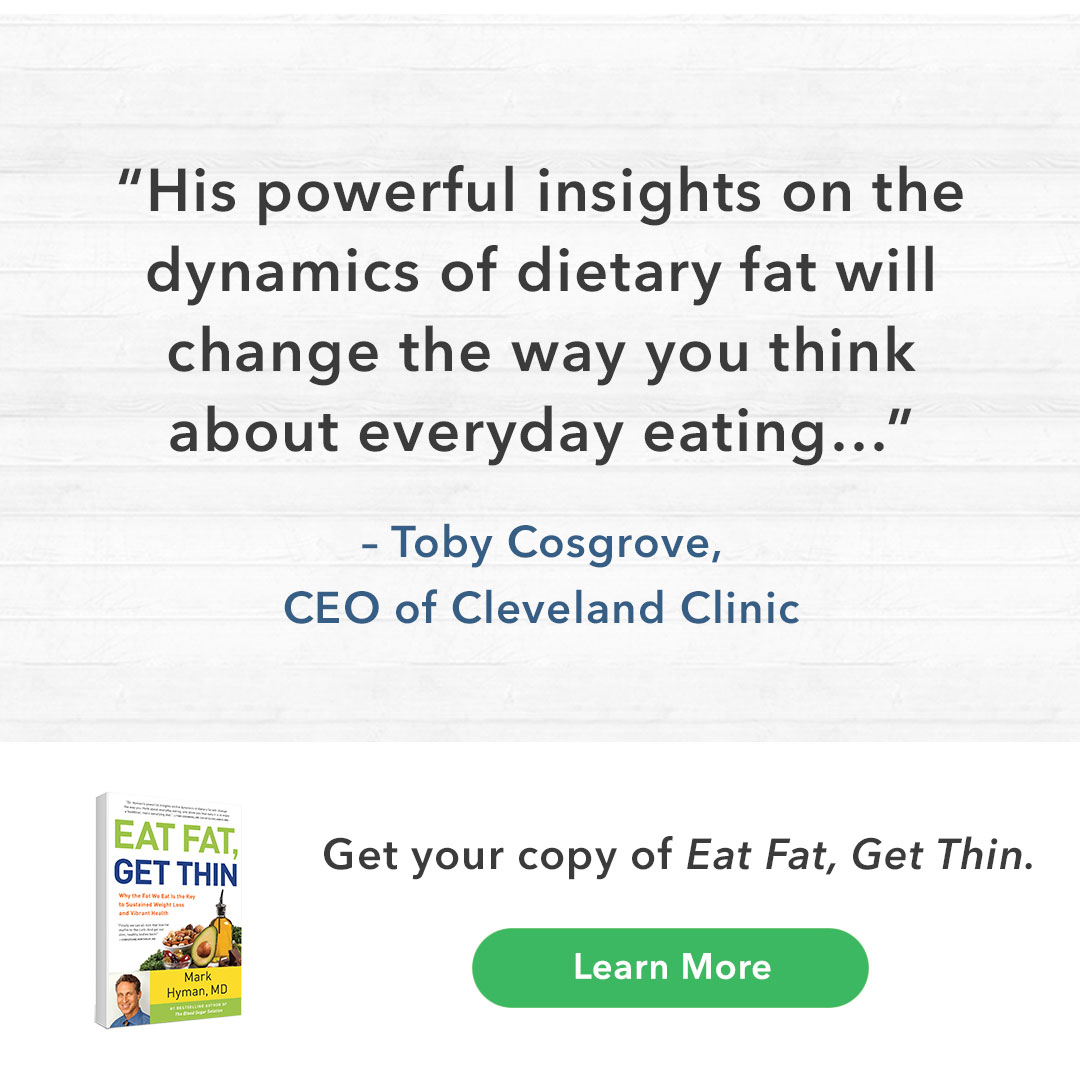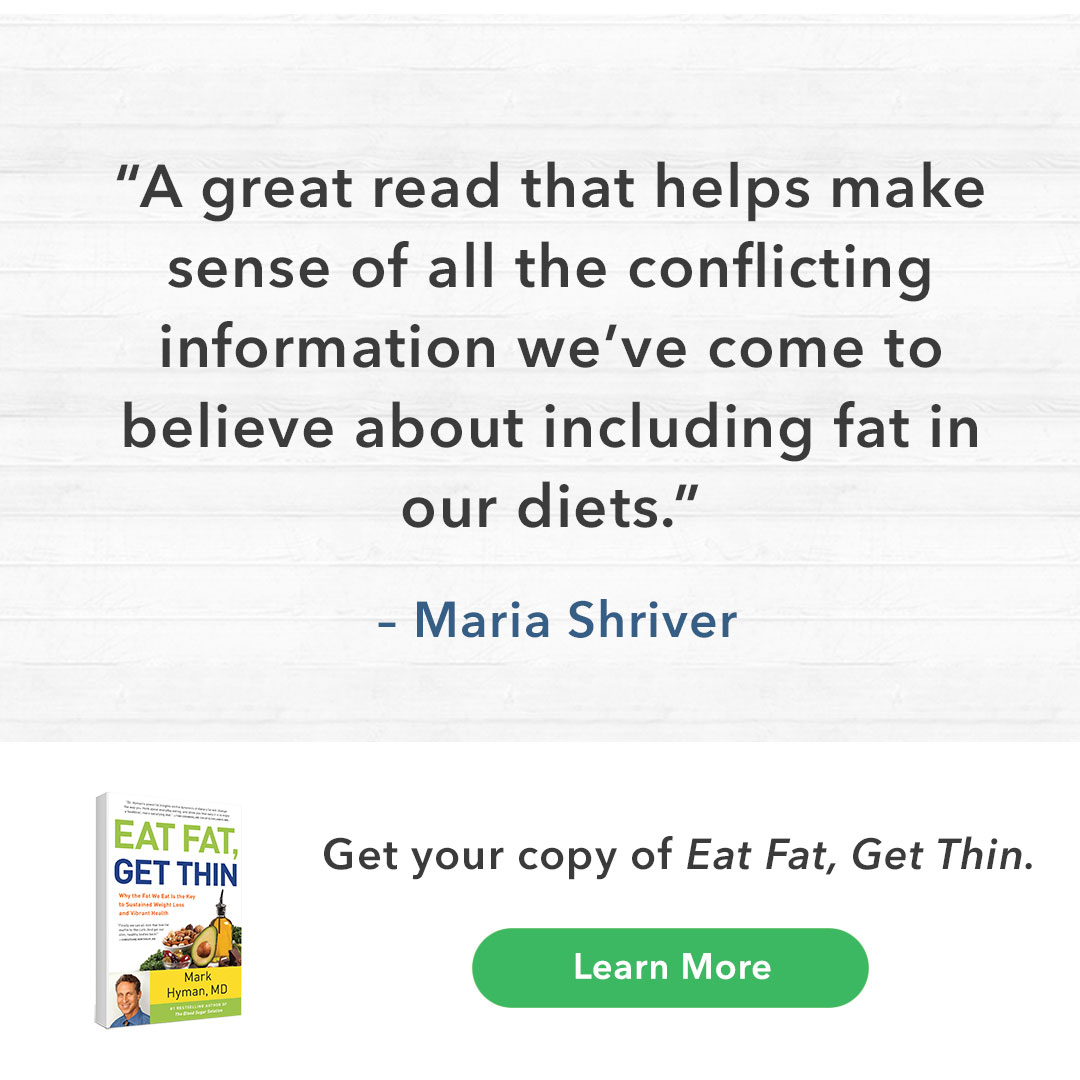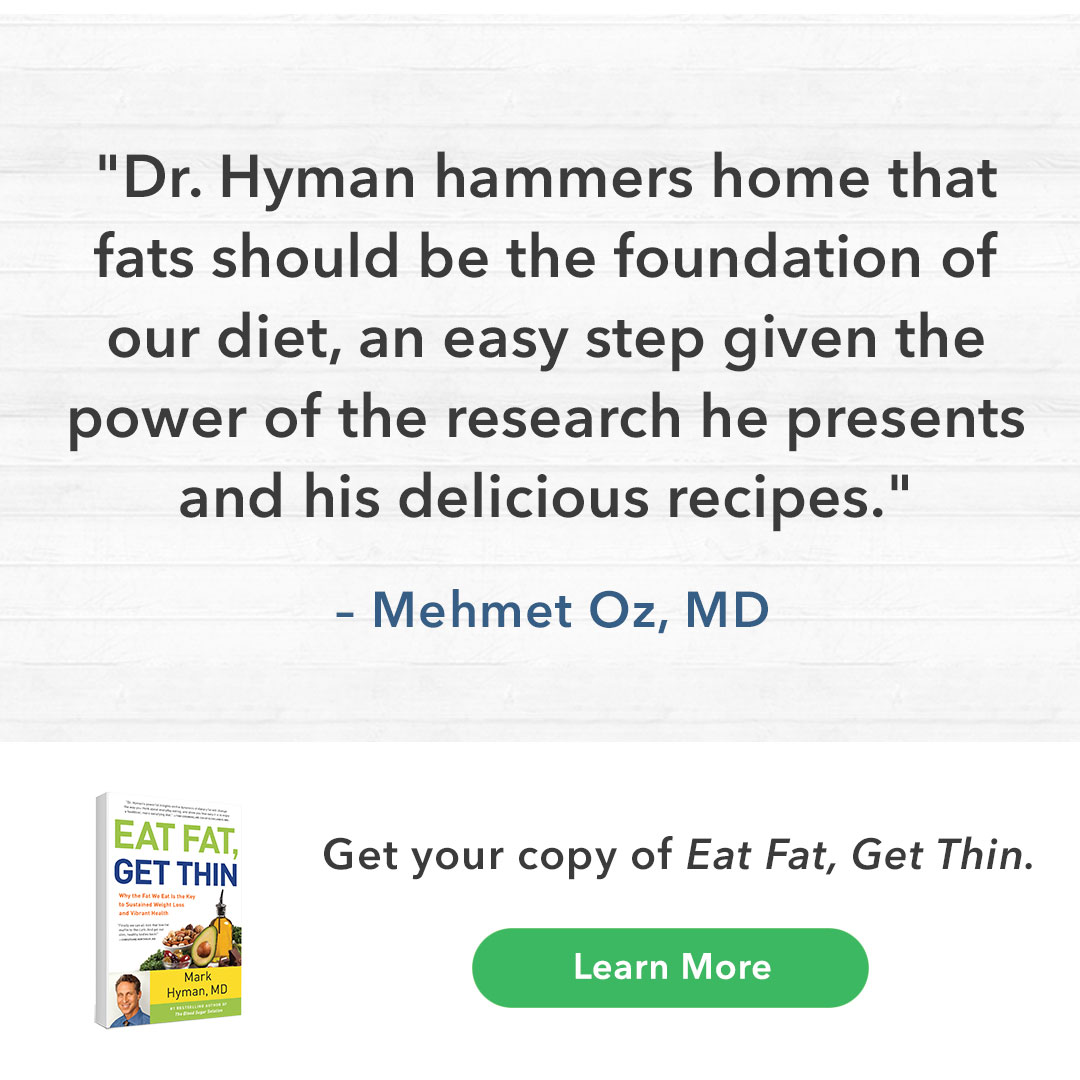Partner Center
Sample Copy
Use this copy for any of your emails or social media platforms. First, click the item that you want to view below, then simply copy and paste the content.
- Sample Email Copy #1 (Fat / Weight Loss Focused)
-
Subject Line Options
- We’ve gotten this all wrong…
- Say Goodbye to Fad Diets (for good!)
- The Skinny on FAT
- Breaking News: Eating FAT Makes You Thin
- Questions about FAT? [You deserve answers…]
- How to reverse chronic disease (naturally)
Dear [contact name],
In his latest book, my good friend and nine-time New York Times best selling author Dr. Mark Hyman reveals a shocking new medical discovery that turns our understanding of why we get fat and sick completely upside down.
So what is this shocking discovery?
Well, consider this: we’ve been told by every health and nutrition professional, leading medical association, and our government to eat less fat – and countless Americans have followed this advice over the last 50 years.
Yet we are sicker and fatter than ever.
Clearly, something isn’t adding up.
As it turns out, eating MORE fat is the single best thing you can do to lose weight, feel good, live longer, and even prevent conditions ranging from heart disease and cancer to diabetes and dementia.
I know you probably have a lot of questions...
Which is why, to celebrate the launch of Eat Fat, Get Thin, Dr. Hyman has created a powerful Q&A Video that he is giving away – 100% free.
Get the FREE Q&A Video here: http://www.eatfatgetthin.com/
It covers the top questions he gets about fat, and simple strategies you can implement today to look and feel your best in no time.
Plus, you’ll discover how you can get your copy of Dr. Hyman’s new book and receive up to 9 not-to-be-missed bonus gifts.
Say goodbye to fad diets, and hello to a slimmer, more vibrant YOU.
To your health,
[insert your signature here]
P.S. Here are just a few of the questions Dr. Hyman answers in this video…
- If it’s not fat, what is the true cause of heart disease, diabetes, and disease?
- How can we differentiate between good and bad fats?
- Is butter really good for you?
- And how did we get into this big, fat mess?
Go here to watch: http://www.eatfatgetthin.com/
- Sample Email Copy #2 (Symptom / Disease Focused)
-
Subject Line Options
- We’ve gotten this all wrong…
- Say Goodbye to Fad Diets (for good!)
- The Skinny on FAT
- Breaking News: Eating FAT Makes You Thin
- Questions about FAT? [You deserve answers…]
- How to reverse chronic disease (naturally)
Dear [contact name],
In addition to rising rates of obesity, cancer, and diabetes, millions of Americans are now suffering from what my friend and colleague Dr. Mark Hyman refers to as “FLC Syndrome” – that’s when you feel like crap!
What most of us don’t know is that this is directly related to the food we eat. Food can harm us or it can heal us.
In his latest book, Dr. Hyman reveals a shocking new medical discovery that turns our understanding of why we get fat and sick completely upside down.
Get the full story here: http://www.eatfatgetthin.com/
So what is this shocking discovery?
Turns out, if you eat more FAT, you get thin (and reverse heart disease, type 2 diabetes, and more).
In other words, just about everything we’ve been told about fat is wrong.
Which is why Dr. Hyman has created a powerful Q&A Video that he is giving away (100% free) to celebrate the launch of his new book Eat Fat, Get Thin.
Watch the FREE Q&A Video here: http://www.eatfatgetthin.com/
In this video, Dr. Hyman answers questions like:
- If it’s not fat, what is the true cause of heart disease, diabetes, and disease?
- How can we differentiate between good and bad fats?
- Is butter really good for you?
- And how did we get into this big, fat mess?
Over 1,000 people participated in the beta of the Eat Fat, Get Thin 21-Day Plan that Dr. Hyman outlines in his book. The results were powerful. They shed weight (as much as 46 pounds!), reduced blood sugar (an average of 23 points) and reported a 69% decrease in ALL symptoms from all diseases.
Now it’s your turn.
If you’re ready to lose the extra pounds, have more energy immediately, and learn how to prevent or even reverse chronic disease naturally, you won’t want to miss this book.
Watch the video (PLUS discover how you can get your copy of Dr. Hyman’s new book and receive up to 9 not-to-be-missed bonus gifts!) right here: http://www.eatfatgetthin.com/
To your health,
[insert your signature here]
- Newsletter Copy
-
To celebrate the launch of his latest book, Eat Fat, Get Thin, nine-time New York Times bestselling author Dr. Mark Hyman has created a powerful Q&A Video that he is giving away – 100% free. It covers the top questions he gets about fat, and simple strategies you can implement today to look and feel your best in no time. Plus, you’ll discover how you can get your copy of Dr. Hyman’s new book and receive up to 9 not-to-be-missed bonus gifts. If you’re ready to lose the extra pounds, have more energy immediately, and learn how to prevent or even reverse chronic disease naturally, you won’t want to miss this. Watch the FREE Q&A Video here: http://www.eatfatgetthin.com/
- Social Media Copy (Facebook/Google/Linked)
-
Remember to use graphics with your posts!
For Facebook and Google+
Tired of diets that just don’t stick? Turns out, there’s a simpler way to lose weight and reverse chronic disease… eating MORE fat! Learn more right here: http://www.eatfatgetthin.com/
In his new book, Eat Fat, Get Thin, Dr. Mark Hyman turns our understanding of why we get fat and sick completely upside down. Turns out, if you EAT MORE FAT, you get thin (and reverse heart disease, type 2 diabetes and more). In other words, just about everything we’ve been told about fat is wrong!
Fortunately, Dr. Hyman has created a powerful Q&A Video that covers the top questions he gets about fat, and simple strategies you can implement TODAY to look and feel your best in no time. Watch the FREE video right here: http://www.eatfatgetthin.com/
Looking and feeling your best does not have to mean depriving yourself. In fact, new science shows that if you eat FAT, you get THIN (and reverse heart disease, type 2 diabetes, and more). Learn more in this FREE video from nine-time NY Times bestselling author Dr. Mark Hyman: http://www.eatfatgetthin.com/
If it’s NOT fat, what is the true cause of heart disease, diabetes and disease? And is butter REALLY good for you?? To celebrate the launch of his latest bookEat Fat, Get Thin, Dr. Mark Hyman has created a powerful Q&A Video that he is giving away – 100% free. It covers the top questions he gets about fat, and simple strategies you can implement TODAY to look and feel your best in no time. Watch the FREE video right here: http://www.eatfatgetthin.com/
- Social Media Copy (Twitter)
-
You may need to use a link shortner such as ow.ly to fit your affiliate link in tweets.
Tired of diets that just don’t stick? Try this… http://www.eatfatgetthin.com/ #eatfatgetthin
[Breaking News] Eating FAT makes you thin? http://www.eatfatgetthin.com/k] #eatfatgetthin
Forget everything you’ve been told about FAT… http://www.eatfatgetthin.com/ #eatfatgetthin
Shocking new video from NY Times best selling author @markhymanmd reveals the truth about FAT http://www.eatfatgetthin.com/ #eatfatgetthin
FAT: the surprising key to losing weight and reversing chronic disease? http://www.eatfatgetthin.com/#eatfatgetthin
Fat is NOT the enemy… Find out what really causes heart disease & diabetes in this FREE video: http://www.eatfatgetthin.com/#eatfatgetthin
- Recipes: Ginger Spice Smoothie
-
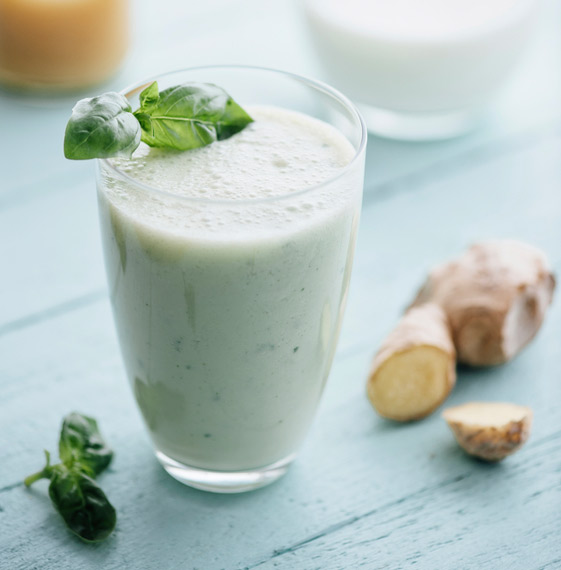
This creamy, spiced, low-carb smoothie is a great way to start your day and get it into fat-burning mode. The ginger is also great for digestion.
Yield: 1 serving Prep time: 5 minutes
- 1. cups almond or cashew milk
- 2 tablespoons raw almond butter
- 2 teaspoons grated ginger
- ¼ teaspoon grated nutmeg
- optional: 1 handful baby spinach or greens of choice
Place all the ingredients in a blender and blend until smooth and creamy.
Nutritional analysis per serving (1½ cups): calories 400, fat 31 g, saturated fat 4 g, cholesterol 0 mg, fiber 7 g, protein 13 g, carbohydrate 19 g, sodium 30 mg
- Recipes: Greek Chicken Thighs with Artichokes and Olives
-

Mediterranean flavors of lemon, oregano, artichokes, and olives make for a delicious dinner dish. Look for jarred, pitted olives, but also check out the options in the deli section of your market. Serve this dish in shallow bowls with the vegetables and juices poured over the top and on the side, and a tossed green salad with a quarter of an avocado per person, dressed with vinaigrette
Yield: 4 servings Prep time: 15 minutes Cook time: 25 minutes
- 8 bone‑in, skin‑on chicken thighs (about 2. pounds)
- ¼ teaspoon sea salt
- ¼ teaspoon ground black pepper
- ¼ teaspoon granulated garlic
- 1 medium onion
- 2 1/2 tablespoons extra virgin olive oil
- 3 large garlic cloves, finely chopped
- 1 can (15 ounces) water-packed artichoke hearts, well drained
- 4 ounces mixed, pitted Greek olives
- 1 1/2 cups low-sodium chicken broth
- 2 tablespoons fresh chopped oregano leaves (or 2 teaspoons dried)
- 1 large lemon, sliced into thin rounds (preferably Meyer lemon)
- 2 tablespoons water
- 1 tablespoon arrowroot starch
Trim any excess fat from the chicken thighs. Season the chicken with the salt, pepper, and granulated garlic.
Cut the onion in half through the root end. Peel, then lay the onion flat on a cutting board and slice crosswise into thin half-moons.
Heat 1 1/2 tablespoons of the olive oil in a large, heavy, wide pan (3‑ to 4‑quart braiser or saute pan) over medium heat. When the oil is hot, add the chicken, skin side down. Cook until the skin is crisp and golden brown, 7 to 9 minutes. Move the chicken thighs to a plate or rimmed baking sheet.
To the same pan, add the onions and cook until softened, 3 to 4 minutes. Add the chopped garlic and cook 1 minute more. Add the drained artichoke hearts, olives, broth, remaining 1 tablespoon olive oil, and oregano. Add the chicken thighs back into the pan and top with the lemon slices.
Bring the mixture to a strong simmer, put the lid on, and reduce the heat to medium low. Simmer over low heat for 12 to 13 minutes or until the thighs reach an internal temperature of 165°F when measured with a digital thermometer.
To serve, place the chicken thighs in shallow bowls and pour the vegetables and jus over the top. If you prefer thicker gravy, in a small bowl or measuring cup whisk together 1 tablespoon arrowroot starch and 1 tablespoon cold water until smooth. Remove the chicken thighs from the pan. Stir arrowroot mixture into the pan and stir and cook 1 to 2 minutes, until the juices thicken into gravy.
Nutritional analysis per serving (2 thighs and a quarter of the vegetables and sauce): calories 450, fat 25 g, saturated fat 4 g, cholesterol 160 mg, fiber 4 g, protein 39 g, carbohydrate 24 g, sodium 690 mg
- Recipes: Steamed Salmon Fillets with Lemon Aioli
-

Steaming is a fast, easy, and nutritious way to prepare salmon. It can be served warm or chilled, making it easily transportable to the office or other away-from-home dining spot. You can steam and chill the salmon ahead of time.
Yield: 4 servings Prep time: 20 minutes Cook time: 10 minutes
FOR THE STEAMING BROTH:
- 4 cups filtered water
- 1 bay leaf
- 2 cloves garlic, crushed
- 3 fresh thyme sprigs
- 1 carrot, roughly chopped
- 1 rib celery, roughly chopped
- ½ small onion, roughly chopped
- 1 large lemon, quartered
FOR THE LEMON AIOLI:
- ½ cup organic mayonnaise
- juice and zest of 1 lemon
- 1 clove garlic, finely chopped or grated
- pinch of sea salt
- pinch of white pepper
FOR THE SALMON:
- 4 (6‑ounce) skinless salmon fillets
- ¼ teaspoon salt
- ¼ teaspoon ground black pepper
In a wide 5‑ to 6‑quart pot, combine all the broth ingredients,squeezing the lemon quarters into the water and adding the lemon rinds to the pot. Place a steamer rack, either metal or nonstick silicone, in the pot. The broth level should just meet or be below the level of the steamer rack. Bring just to a boil. Turn the heat down to low, place a lid on the pot, and simmer the broth for 15 minutes to blend the flavors.
While the broth is simmering, combine all the aioli ingredients in a small bowl and stir until smooth. Set aside to serve with the salmon.
Sprinkle the salmon fillets with the salt and pepper. Place the salmon fillets in a single layer on the steamer rack and replace the lid. Steam the salmon for 5 to 6 minutes or until the salmon reaches an internal temperature of 145°F when tested with a digital thermometer. The fillets will be a light pink-orange color.
Serve the salmon warm or cool with 2 tablespoons of the lemon aioli per serving. Pair with Lemony Broccoli Slaw. You can make ahead and chill the salmon or store leftovers in the refrigerator in a glass container with a tight-fitting lid. It’s best enjoyed within 2 days.
Nutritional analysis per serving (about 6 ounces salmon,2 tablespoons aioli): calories 450, fat 31 g, saturated fat 5 g, cholesterol 125 mg, fiber 0 g, protein 38 g, carbohydrate 2 g, sodium 310 mg
- Guest Blog Post #1
-
Link to video: https://www.youtube.com/watch?v=uCRginYo4rk#action=share
Embed code for Video:
<iframe width="560" height="315" src="https://www.youtube.com/embed/uCRginYo4rk" frameborder="0" allowfullscreen></iframe>Separating Fat from Fiction: 10 Fat Facts You Need to Know
“Everyone seems to be talking about fat these days. That fat somehow is good now and can help with weight loss and disease prevention. How can that be true when for decades we all were told that fat was the bad guy? What are its benefits? Are there any downsides to eating more fat?”
Is a recent question I received and it comes at the perfect time. I have just finished writing my new book Eat Fat, Get Thin, hitting the bookstores on February 23, 2016. I wrote this book because almost everyone I know – doctors and patients and eaters alike are all confused about fat and still hold on to myths and misinformation that prevents them from taking advantage of the latest science to lose weight and get healthy.
You’re likely familiar with many of them: Fat makes us fat, contributes to heart disease, leads to diabesity; saturated fat is bad; vegetable oils are good…I could go on, but I think you know what I’m talking about.
None of these beliefs about fat are true. In my latest book, I combined the latest research with my several decades of empirical evidence working with patients to prove what I’ve long discovered: The right fats can help you become lean, healthy, and vibrant.
Fat is one of the body’s most basic building blocks. The average person is made up of between 15 and 30 percent fat! Yet for decades, we’ve unfairly demonized dietary fat, diligently followed a low-fat diet that almost always equates into a high-sugar and high-refined carb diet that contributes to insulin resistance, obesity, heart disease, type 2 diabetes, and numerous other problems.
Simply put: Sugar, not fat, is the real villain that steals our health and sabotages our waistlines.
With Eat Fat, Get Thin, I’m determined to separate fat from fiction by giving you the skinny on fats – what to eat and how to use dietary fats to regain your health and ideal body weight. Eating lots of the right fat will make you thin. The right fats increase metabolism, stimulate fat burning, cut hunger, optimize your cholesterol profile, and can reverse type 2 diabetes and reduce your risk for heart disease.
Over the next few months in these blogs I’m going to blow up our myths about dietary fat and show you how this still-maligned macronutrient can help you become lean and healthy.
For now, let’s look at 10 take-home fat facts.
- Sugar, not fat, makes you fat. The average American eats 152 pounds of sugar and 146 pounds of flour that converts to sugar every year. That’s nearly a pound of sugar and flour combined every day! More sugar means your cells become numb to insulin’s “call.” Your body pumps out more and more insulin to pull your blood sugar levels back down. You can’t burn all the sugar you eat. Inevitably, your body stores it as fat, creating insulin resistance and overall metabolic havoc among other mayhem.
- Dietary fat is more complex than sugar. There are some 257 names for sugar, but despite very minor variations, they all create the same damage. In other words, sugar is sugar is sugar; it all wreaks havoc on your health. Fat is more complex. We have saturated, monounsaturated, polyunsaturated, and even trans fats, not to mention subcategories within each group. Some fats are good; others neutral; and yes, a few are bad.
- Low-fat diets tend to be heart-unhealthy, high-sugar diets. When people eat less fat, they tend to eat more starch or sugar instead, and this actually increases their levels of the small, dense cholesterol that causes heart attacks. In fact, studies show 75 percent of people who end up in the emergency room with a heart attack have normal overall cholesterol levels. But what they do have is pre-diabetes or type 2 diabetes.
- Saturated fat is not your enemy. A review of all the research on saturated fat published in the American Journal of Clinical Nutrition found no correlation between saturated fat and heart disease. As with all fats, quality becomes key here. The fats in a fast-food bacon feedlot cheeseburger will have an entirely different effect than saturated fat in coconut oil. Let’s stop classifying it all as the same.
- Some fats are unhealthy. They include trans fat and inflammatory vegetable oils. Unfortunately, these fats have increased in our diet as they make us fatter and contribute to inflammation, which plays a role in nearly every chronic disease on the planet.
- Everyone benefits from more omega 3s.About 99 percent of Americans are deficient in these critical fats. Ideal ways to get them include eating wild or sustainably raised cold-water fish (at least two servings weekly), buying omega-3 rich eggs, and taking an omega-3 supplement twice a day with breakfast and dinner that contains 500 – 1,000 milligrams of omega-3 fats (a ratio of roughly 300 EPA to 200 DHA is ideal). You’ll find several quality professional omega 3 supplements in my store.
- Eating fat can make you lean. Healthy cell walls made from high-quality fats are better able to metabolize insulin, which keeps blood sugar better regulated. Without proper blood sugar control, the body socks away fat for a rainy day. The right fats also increase fat burning, cut your hunger, and reduce fat storage. Eating the right fats makes you lose weight, while eating excess sugar and the WRONG types of fat make you fat.
- Good fats can heal. I have many diabetic patients whose health improves when I get them on diet that’s higher in fat. I had one patient with high cholesterol who could not lose weight, so I bumped up her healthy fat content to 70 percent. (I don’t recommend this for most patients; hers was an extreme case.) Her cholesterol plummeting from 300 to 190, her triglycerides dropped 200 points, and she lost 20 stubborn pounds that she couldn’t ever lose before!
- Your brain is about 60 percent fat. Of that percentage, the biggest portion comes from the omega-3 fat called docosahexaenoic acid (DHA). Your brain needs DHA to spark communication between cells. Easy access to high-quality fat boosts cognition, happiness, learning, and memory. In contrast, studies link a deficiency of omega-3 fatty acids to depression, anxiety, bipolar disorder, and schizophrenia.
- Your body gives you signs whether or not you are getting enough quality fat. The higher-quality the fat, the better your body will function. That’s because the body uses the fat you eat to build cell walls. You have more than 10 trillion cells in your body, and every single one of them needs high-quality fat. How do you know if your cells are getting the fats they need? Your body sends signals when it’s not getting enough good fats. Warning signs include:
- Dry, itchy, scaling, or flaking skin
- Soft, cracked, or brittle nails
- Hard earwax
- Tiny bumps on the backs of your arms or torso
- Achy, stiff joints
I eat fat with every meal, and I’ve never felt better. The right fats can improve your mood, skin, hair, and nails, while protecting you against Type 2 diabetes, dementia, cancer, and much more.
Among my favorite sources of fat include:
- Avocados
- Nuts—walnuts, almonds, pecans, macadamia nuts, but not peanuts (one study showed a handful of nuts a day reduced death from all causes by 20 percent)
- Seeds—pumpkin, sesame, chia, hemp
- Fatty fish, including sardines, mackerel, herring, and wild salmon that are rich in omega-3 fats
- Extra virgin olive oil (a large study showed that those who consumed 1 liter a week reduced heart attacks by 30 percent)
- Grass-fed or sustainably raised animal products (I recommend the Environmental Working Group’s Meat Eater’s Guide to eating good quality animal products that are good for you and good for the planet).
- Extra virgin coconut butter, which is a great plant-based source of saturated fat that has many benefits. It fuels your mitochondria, is anti-inflammatory, and doesn’t cause problems with your cholesterol. In fact, it may help resolve them.
Want to learn more? Watch my Q&A video on Fat. Here are just some of the questions I answer in this video:
- If it’s not fat, what is the true cause of heart disease, diabetes, and disease?
- How can we differentiate between good and bad fats?
- Is butter really good for you?
- And how did we get into this big, fat mess?
Go here to watch this video.[Use your unique tracking link OR link to [http://eatfatgetthin.com/]
Wishing you health and happiness,
Mark Hyman, M.D.
- Guest Blog Post #2
-
Link to video: https://www.youtube.com/watch?v=Ir-4TWI1Esk#action=share
Embed code for Video:
<iframe width="560" height="315" src="https://www.youtube.com/embed/Ir-4TWI1Esk" frameborder="0" allowfullscreen></iframe>7 Ways to Optimize Cholesterol
“My doctor says my LDL cholesterol is really high and he’s concerned,” is a recent question I received from a reader. “Now you’re saying that I should eat more fat , which should improve my cholesterol. I thought fat was the last thing I should be eating with high cholesterol.”
I know how confusing cholesterol and dietary fat has become. The media, many scientists, and even doctors still disseminate outdated research on nutrition.
The reality is, most of us have little understanding about our cholesterol levels in our blood and the whole topic is much more complicated than we thought.
Many people still believe that eating cholesterol and fat, especially saturated fat , causes heart attacks and that taking statin drugs provide a powerful way to reduce your risk of heart attacks. But is this really true?
One of the biggest refuse-to-die myths is that dietary and cholesterol levels are the enemy and a high-fat diet causes heart attacks.
Your doctor, the media, and traditional health professionals advise that you shouldn’t eat too much fat or cholesterol; yet, study after study shows no link between total fat, saturated fat, or dietary cholesterol and heart disease.
Total Fat and Saturated Fat Don’t Cause Heart Disease
One review of 72 studies comprising almost 600,000 people found no link between total or saturated fat and heart disease, but they did find that trans-fats were clearly harmful and omega 3 fats were beneficial.
What most doctors and drug company commercials don’t talk about are the studies that show that most people who have heart attacks actually have normal cholesterol levels. Because we have statins and other drugs that lower cholesterol, the belief is that these drugs are preventing the heart attacks. What we need to focus on, is what we can do to reduce our risk for heart attack.
One large study looked at 541 hospitals with 136,905 admissions for heart attacks. Altogether, researchers accounted for 59 percent of all heart attacks in America that year.
Interestingly, all of these patients who had heart attacks did not have high LDL or elevated total cholesterol. In fact, 75 percent of those people had “normal” LDL cholesterol, with 50 percent having optimal LDL levels. So much for the high LDL contributing to heart attacks.
Here’s where it gets interesting. Only 10 percent of the participants had levels of HDL (“good”) cholesterol over 60. This means that 90 percent of these patients who suffered a heart attack had HDL levels under 60. Low HDL is a big red flag for pre-diabetes , or what I call diabesity. And we now know that low HDL is the real driver of most heart attacks and heart disease.
Indeed, researchers in this study found most of these patients had metabolic syndrome, pre-diabetes or diabesity .
I have seen this over and over in my practice over several decades. Fat and dietary cholesterol are not the culprits. It’s sugar and refined carbs that contribute to diabesity, heart disease, and so many other problems.
The End of Low-Fat Diet Recommendations
The 2015 U.S. Dietary Guidelines Advisory Committee reviewed all the research over 40 years and told us to stop worrying about dietary cholesterol, arguing it is “not a nutrient of concern.” They also finally lifted any recommendations to restrict dietary fat after 35 years of a steady diet of low-fat recommendations! This was buried in the report but is huge news.
I recently interviewed one of the world’s leading cholesterol experts, Dr. Ronald Krauss. He told me in the 1980s, when low-fat recommendations were in their heyday, he performed a study taking people with normal cholesterol and feeding them a low-fat, high-carb diet, which experts considered healthy at the time.
Dr. Krauss was shocked at what happened. This supposedly healthy low-fat diet changed healthy cholesterol profiles into heart attack-prone profiles, with high triglycerides, low HDL, and small LDL particles. Researchers were shocked.
What we now know matters most is the type of fat you eat, not the amount. Trans-fats and refined vegetable oils promote abnormal cholesterol profiles; whereas, omega 3 oils from fish and monounsaturated fats found in nuts and olive oil can actually improve the type and quantity of your cholesterol.
Trans and damaged fats are unhealthy, but the biggest culprit of abnormal cholesterol levels is not fat at all. It is sugar in all its many forms.
The sugar you consume converts to abnormal blood cholesterol and belly fat. The biggest culprit of all is high-fructose corn syrup (HFCS) found in soda, juices, and in most processed foods. That’s what causes cholesterol issues in most people, not saturated or total fat.
When you ingest fructose in high amounts without the associated fiber found in whole fruit, it turns on the cholesterol-producing factory in your liver called lipogenesis which makes super dangerous small LDL particles, jacks up your triglycerides, and lowers the HDL (or good) cholesterol. So does sugar in any form, including flour and refined carbs .
The Dangers of Statin Medication Used to Lower Cholesterol
So, why are we all obsessed with total cholesterol and LDL cholesterol when we know they aren’t the primary culprits for heart attacks? Because a multi-billion dollar drug industry exists behind the number-one best-selling class of drugs on the market: Statins.
Believing that having a low LDL is the best way to prevent heart disease, doctors often prescribe medications like statins to keep those levels low.
Yet these drugs can introduce a whole host of problems including muscle damage , memory issues, Parkinson’s-like symptoms, and muscle aches and pains. We now know that statins can increase risk of diabetes by about 50 percent .
They also prevent your muscles from working properly so when you exercise, you can’t get as fit. One 12-week study found that people who took statins showed a 13 percent reduction in fitness after a vigorous exercise program. The statins blocked the benefits of exercise.
Even more concerning is that statins don’t even work that well for preventing heart attacks, despite all the media hype and your doctor’s advice. You have to treat 50 people with statins to prevent 1 heart attack or treat 890 people to prevent 1 death. That means 889 people are taking statins with no benefit.
When the statins do work, it often has nothing to do with their effect on cholesterol. Some of the touted benefits of statins are that they lower inflammation and perform like antioxidants in the body.Overall, however, the drawbacks outweigh these and other potential benefits for most people. They may have a little more benefit for those who already have had a heart attack but not much for those who have never had one (which is when most statins are prescribed – before an incident has occurred).
7 Steps to Optimize Your Cholesterol
If your doctor is concerned about your cholesterol, you will want to use these seven strategies to optimize lipid levels and your overall health:
- Get the right cholesterol tests. You must check for particle size and particle number by asking your doctor to do a particle size test. Other cholesterol tests are outdated. A regular cholesterol test won’t reveal particle size. The tests to get are either an NMR Lipid Panel from LabCorp or the Cardio IQ Test from Quest Diagnostics. Insist on one of these tests. They are the only way to know what’s really going on with your cholesterol. You want to see results that show lots of safe, light, fluffy, big cholesterol particles. You do not want to see small, dense, artery-damaging cholesterol particles.
- Check for metabolic syndrome or diabesity. If you have small LDL and HDL particles or high triglycerides (over 100), you probably have metabolic syndrome. If your triglyceride-to-HDL ratio is over 2 you also likely have diabesity. Ask for a glucose-insulin challenge test or an insulin-response test. Most doctors don’t do this test for insulin; they only check glucose. It is performed by checking your glucose and insulin after fasting. Then you drink a 75-gram glucose drink and your insulin and blood sugar are measured again at 1- and 2-hour intervals. You should also ask your doctor to check your hemoglobin A1C, which is a measurement of your blood sugar control over the last six weeks. If it’s greater than 5.5 percent, you may have metabolic syndrome.
- Eat a healthy diet with healthy fats. The good fats in foods like avocado, coconut oil, extra-virgin olive oil, wild-caught fish, nuts, and seeds can improve the type and quantity of cholesterol in your body.
- Eat a low-glycemic load diet. Besides healthy fats, focus on a high-fiber, plant-based diet with lots of phytonutrients and omega 3 fats. That includes lots of non-starchy veggies. Consume plenty of good-quality protein found in beans, seeds, nuts, and high-quality, sustainably raised or grass-fed animal protein.
- Exercise regularly. Studies show consistent, regular exercise can optimize cholesterol levels. If you’re a newbie, even 30 minutes of walking will help. More advanced exercisers can incorporate weight training and high-intensity interval training.
- Focus on quality sleep . Optimizing blood sugar is just one of the numerous benefits of eight hours of sleep every night. Practice good sleep practices: Turn off the TV and Internet a few hours before bedtime. Many patients like to unwind with my UltraCalm CD . Get 19 of my top sleep tips here .
- Take the right supplements . You can find high-quality supplements to optimize cholesterol in my store . These include:
- A multi-vitamin
- Fish oil or EPA/DHA
- Vitamin D3
- Niacin
- Glucomannan or PGX (a super fiber)
- Red rice yeast
- Low-dose statins (only if you’ve had a heart attack, heart disease or if you have multiple other risk factors while carefully monitoring for muscle and liver damage)
I hope you can see how the story of cholesterol is not black and white. It’s certainly not the enemy. Follow these seven strategies outlined above and you will be able to optimize your cholesterol levels and achieve optimal health.
Want to learn more about Fat and Cholesterol? Watch my Q&A video on Fat. Here are just some of the questions I answer in this video:
If it’s not fat, what is the true cause of heart disease, diabetes, and disease?
· How can we differentiate between good and bad fats?
· Is butter really good for you?
· And how did we get into this big, fat mess?
Go here to watch this video.[Use your unique tracking link OR link to [http://eatfatgetthin.com/]
Wishing you health and happiness,
Mark Hyman, M.D.
- Dr. Mark Hyman Bio
-
Dr. Hyman is a practicing family physician, a nine-time New York Times bestselling author, and an internationally recognized leader, speaker, educator, and advocate in his field. He is the Director of the Cleveland Clinic Center for Functional Medicine. He is also the founder and medical director of The UltraWellness Center, chairman of the board of the Institute for Functional Medicine, a medical editor of The Huffington Post, and has been a regular medical contributor on many television shows including CBS This Morning, the Today Show, CNN, The View, the Katie Couric show and The Dr. Oz Show. Join Dr. Hyman on his path to revolutionize the way we think about and take care of our health and our societies at www.drhyman.com, on Twitter and Instagram @markhymanmd, and on Facebook at facebook.com/drmarkhyman.
- Dr Mark Hyman Images
-

- Eat Fat, Get Thin book cover
-











